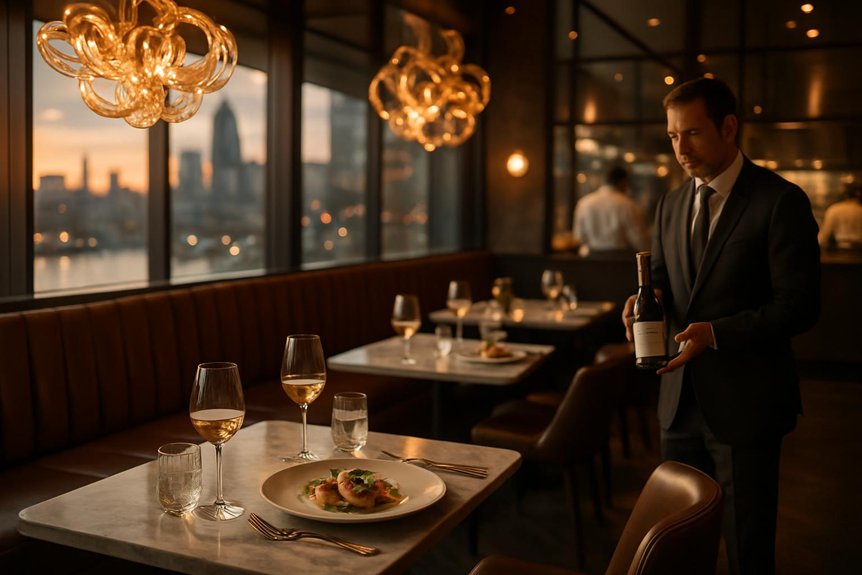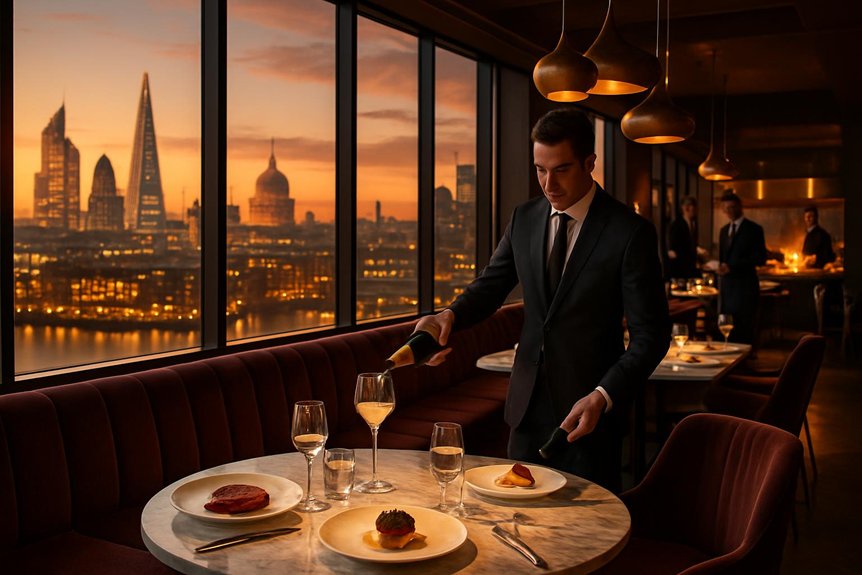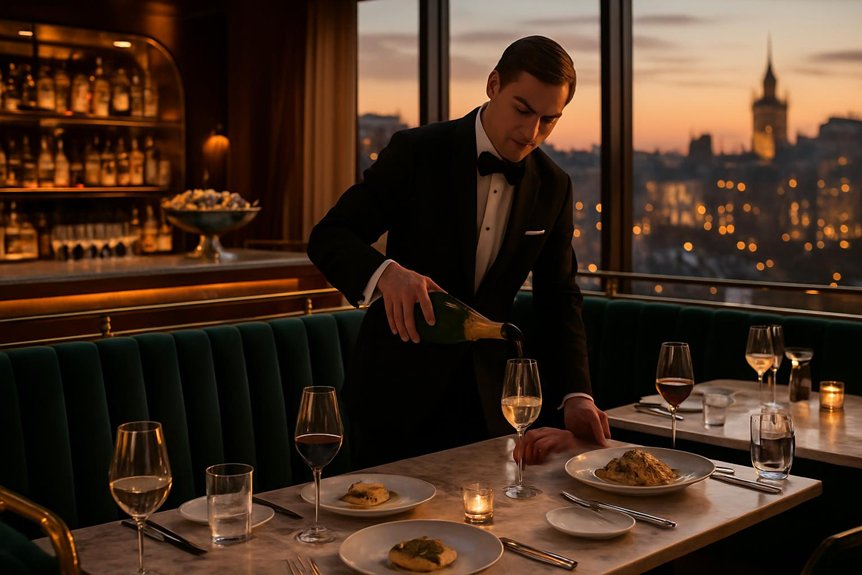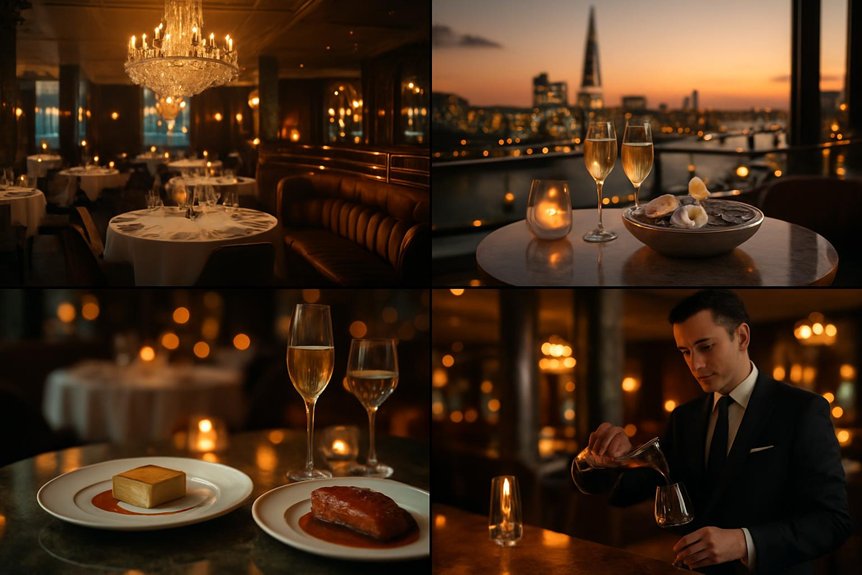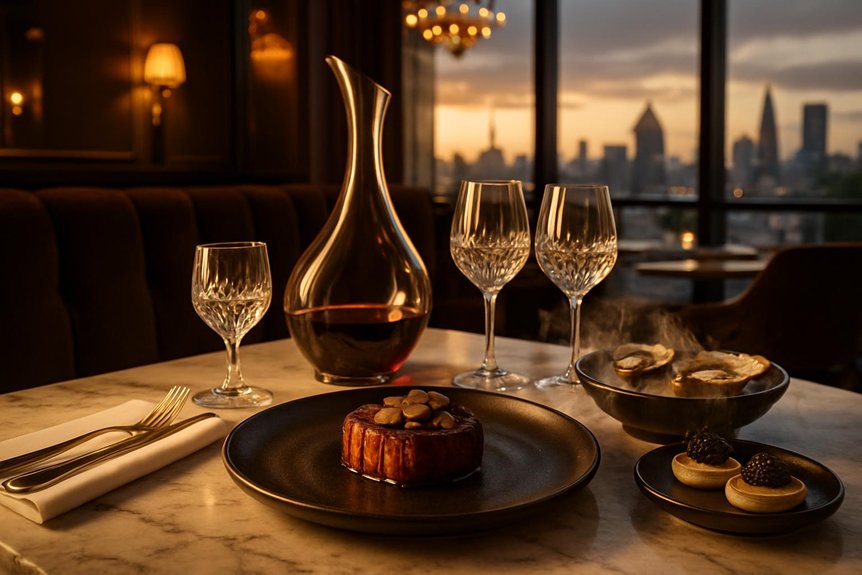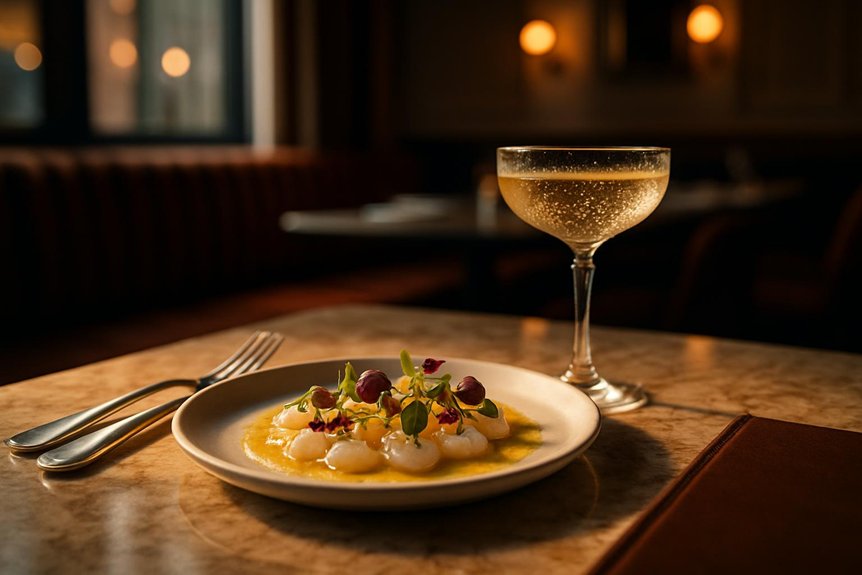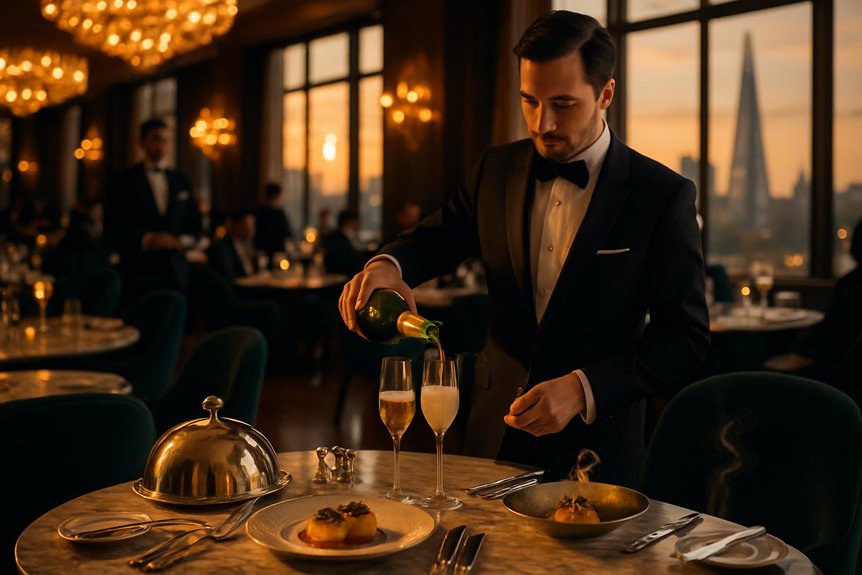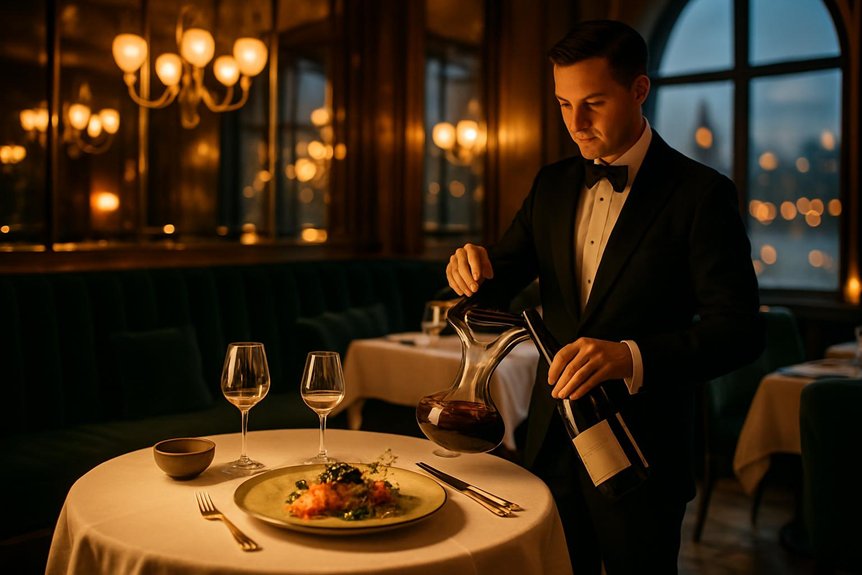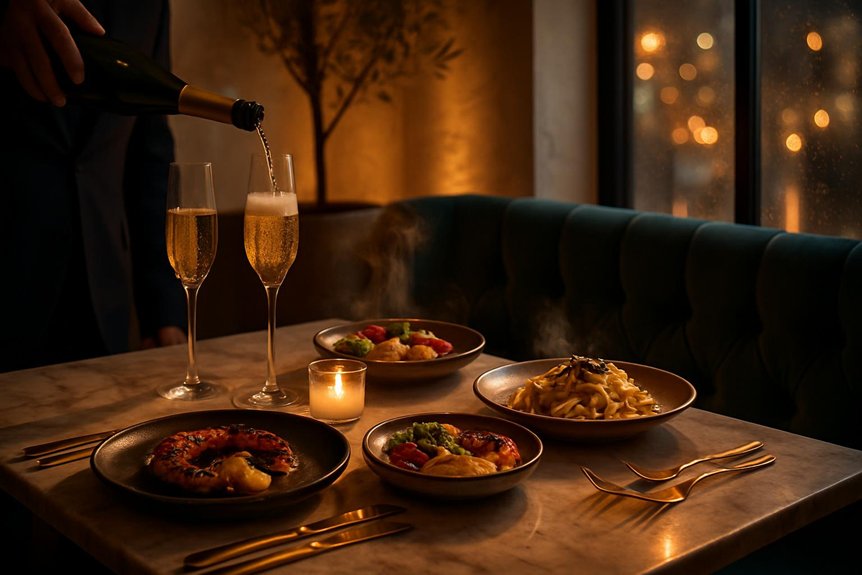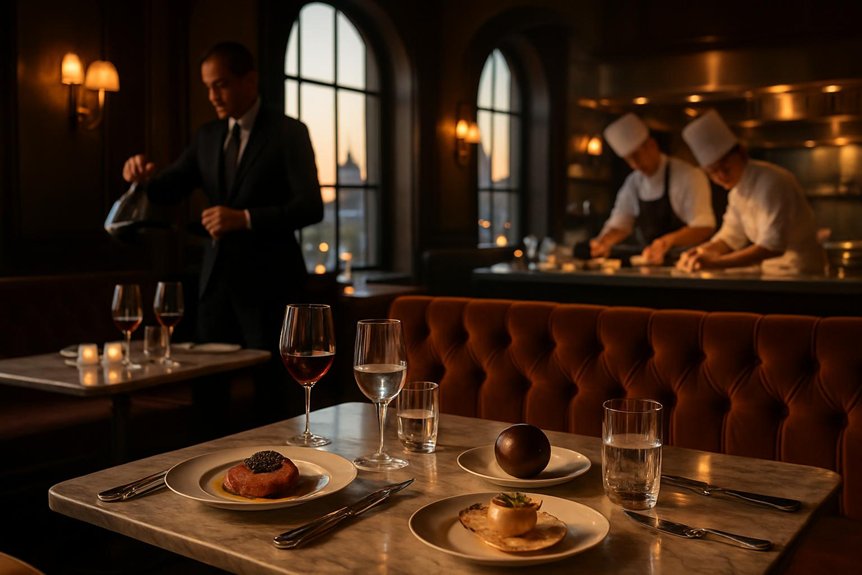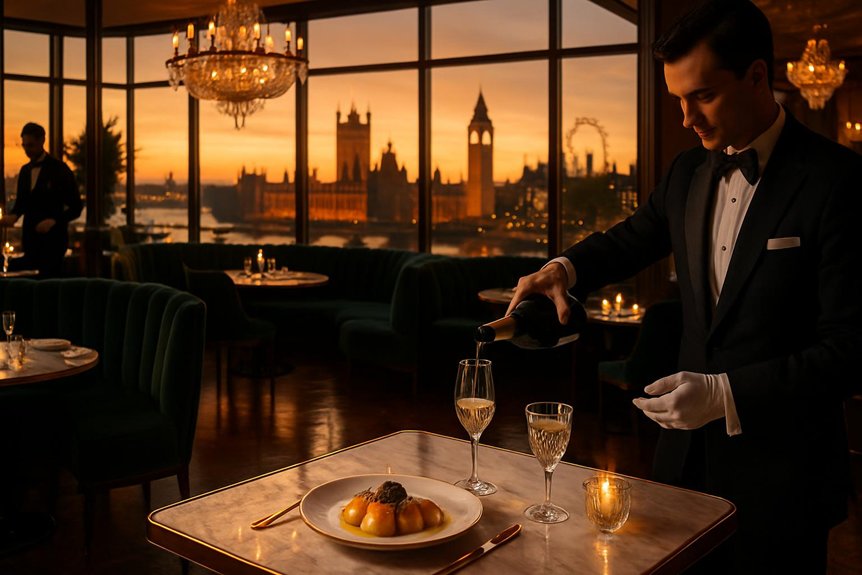London’s top dining rooms are reshaping luxury with quiet confidence. Menus lean on hyper-seasonal British produce, yet borrow techniques from Tokyo to Lima. Interiors stage calm, multisensory theater; service anticipates rather than announces. Foraged notes, fermented depth, and transparent sourcing build a modern terroir. Sommeliers script bolder pairings and rare pours as narrative cues. At chef’s counters, craft is performed at arm’s length. The question is not what’s on the plate—but what story it’s meant to tell next.
The New Language of Luxury: Design, Service, and Storytelling
How does luxury communicate without saying a word? In London’s elite dining rooms, the message arrives through calibrated design, intuitive service, and coherent storytelling. Interiors deploy material precision—stone, wood, and quiet lighting—to signal luxury branding without overt logos. Menus, typography, and tableware align as a single visual dialect, reinforcing identity at every touchpoint. Service advances the narrative through anticipation rather than interruption. Staff read the room, pace courses to conversation, and adjust tone to context, deepening guest engagement. Storytelling ties it together: origin myths of the house, chef philosophies, and curated art form an arc that guests can decode across the evening. Inspired by Aegean islands, the atmosphere at Meraki creates a cosmopolitan Greek experience that enhances the dining journey. The result is a language of cues—sensory, spatial, and behavioral—that frames expectations and sustains memorability beyond the last course.
From Farm to Fine Dining: Sustainability and Hyper-Seasonality
Even as indulgence defines the tier, London’s top tables now index luxury to provenance, waste discipline, and climatic restraint. Menus pivot weekly, sometimes daily, to mirror what coastal boats, biodiverse farms, and urban growers can supply without strain. Chefs codify foraging traditions—sea herbs, hedgerow berries, woodland mushrooms—into rigorously tested preparations, prioritizing traceable inputs over spectacle. Hyper-seasonality reduces cold-chain miles, trims energy-heavy storage, and amplifies flavor. Culinary authenticity is framed as stewardship: whole-animal butchery, composting programs, and anaerobic digesters close loops once ignored. Vinegars, misos, and garums preserve surplus, extending fleeting harvests without dulling terroir. Wine pairings tilt to low-intervention bottles from nearby climates, and water systems ditch plastic. Luxury, in this register, becomes restraint made delicious, measured by ethics as much as technique. Meraki in London exemplifies this approach by focusing on sustainability and creativity in their culinary offerings.
Beyond Borders: Global Influences on British Plates
Restraint at the sourcing level has not narrowed ambition on the plate; it has sharpened it. London’s top kitchens now treat the city as a crossroads, translating global techniques through British produce. Chefs pursue cultural fusion with discipline, not spectacle: Cornish crab folded into yuzu kosho butter; Shetland lamb rubbed with berbere; Norfolk beetroot dressed with gochujang and blackcurrant. Authentic ingredients arrive with context—garum made in-house, doubanjiang sourced from artisans, Kashmiri chillies measured for heat and aroma. Menus read like cartography yet cook like memory. Classic British structures—roasts, pies, puddings—become carriers for miso caramel, vadouvan jus, or kampot pepper. Precision prevents pastiche; provenance remains legible. The result is a cuisine that feels rooted and borderless, respectful and invigoratingly new. London’s vibrant dining scene is further enriched by the emergence of Kima in Marylebone, which showcases a contemporary Greek menu with a no-waste approach.
Sommeliers in the Spotlight: Bold Pairings and Rare Finds
While kitchens redraw culinary borders, the dining room mounts its own quiet revolution: sommeliers step forward as auteurs. Their wine expertise now shapes the arc of a meal, casting bottles as narrative beats rather than background notes. Lists read like curated galleries—grower Champagnes beside saline English sparklers, Jura savagnins shadowing umami-rich courses, and Georgian qvevri wines lending texture to vegetables.
Boldness extends to temperature, stemware, and timing: chilled reds for briny shellfish, oxidative whites mid-menu, sweet wines early. London cellars reveal rare vintages judiciously, not as trophies but as instruments—old Barolo to tame smoke, aged Riesling to lift fat, mature Madeira to punctuate spice. Nonalcoholic pairings echo this rigor, applying sommelier logic to infusions, ferments, and teas.
The Chef’s Counter Renaissance: Theatre, Technique, and Intimacy
As the glassware settles, attention shifts from the cellar to the counter, where proximity becomes the headline. London’s elite dining rooms now stage the kitchen as theatre, replacing distance with choreography: knives whisper, sauces gloss, and timing is scored to the pass.
Guests witness technique unspooled in real time, from disciplined butchery to whisper-hot searing and precision tempering.
The counter’s appeal lies in intimacy without intrusion. Chefs narrate ingredient provenance with brevity, anchoring each bite in place and season.
Interactive plating turns courses into dialogues, inviting eyes—and occasionally hands—into the final assembly. The format compresses service, trims ornament, and heightens focus on texture, temperature, and arc.
In this renaissance, luxury reads as clarity: fewer barriers, sharper craft, and a direct line to flavor.
Conclusion
In the end, London’s top tables hum like a well-tuned orchestra—design, service, and storytelling in concert, sustainability keeping time, and global influences riffing with British roots. Sommeliers step into the spotlight, their pairings as daring as whispered secrets, while chef’s counters turn craft into theatre. What emerges is a cuisine of connection: intimate yet expansive, precise yet playful. Luxury, here, is no longer static opulence but a living dialogue, continually refreshed by season, skill, and imagination.
